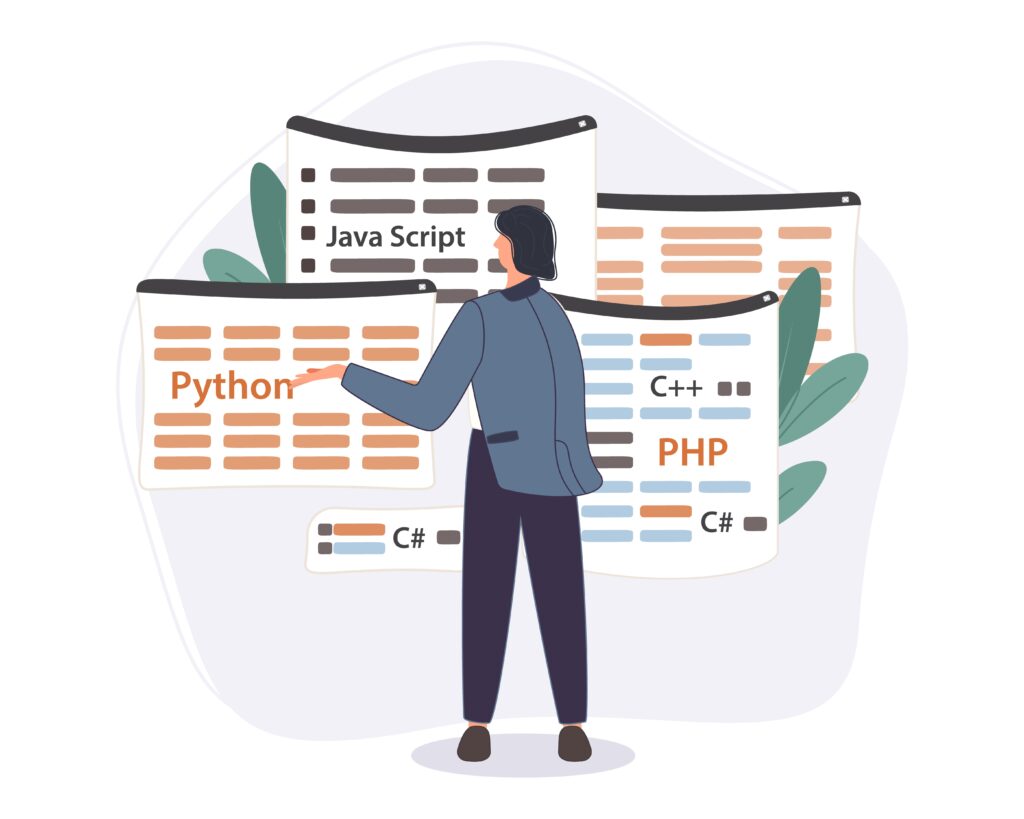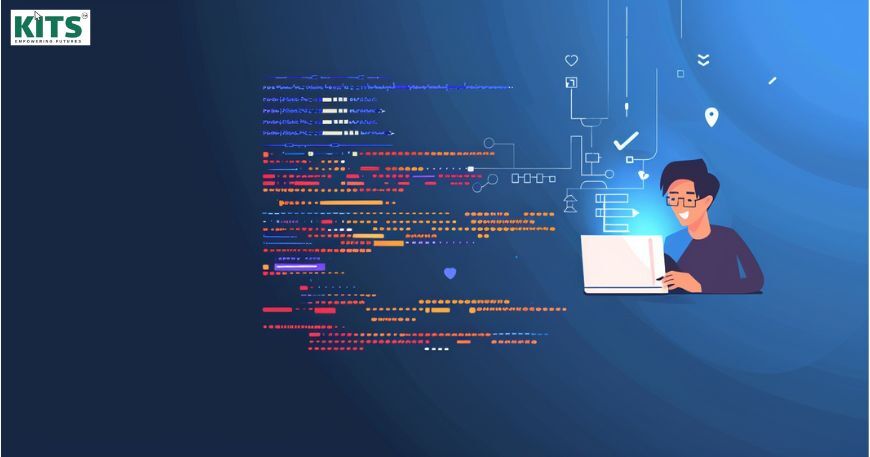Introduction
Are you unsure whether to choose Python or Java? There are important factors to consider when deciding which programming language is best for your business. Review this comprehensive comparison of Python and Java to assist you in making a well-informed decision.
Choosing between Java and Python can be tough for beginners and software developers entering the development industry. The rivalry between these two languages makes it hard to pick just one.
Both Java and Python have become very popular in the software industry for different reasons.
Over the past decade, the number of programming languages used in software development has greatly increased. Among these, Java and Python have stood out, attracting both developers and beginners.
Since 2000, both languages have stayed at the top of the programming world, even with the arrival of many new languages.
How have they managed to stay so popular? Can one outshine the other?
Which programming language is best? Can Java vs Python be decided easily?
In this article, we will introduce both languages and compare their key concepts. But first, let’s look at why they are so popular. Which programming language is best and can Java vs Python finally be settled?

Java vs Python: Demand
According to Google Trends, Python and Java had similar search volumes and popularity up until December 2019. However, in the past few years, Python has surged ahead and is now more popular than Java.
Another report shows that Python ranks third among the most used programming languages by developers worldwide as of 2023. In contrast, Java is in seventh place with 30.55% popularity. This indicates that many developers prefer using Python for software development and data analysis tasks.
Besides these market trends, various other surveys and reports highlight that Python is gaining more popularity and momentum compared to Java. However, this doesn’t mean Java is becoming outdated.
Java still offers numerous benefits and functionalities in different areas, making it the preferred choice for enterprise-grade and custom software development projects. Its faster runtime and easy debugging features contribute to its ongoing popularity.
Before we look into the comparison between Java and Python, let’s introduce each language and understand their fundamentals.
What is Python?
Python is a dynamic, object-oriented language prized for its clear syntax. Created by Guido van Rossum in 1991, Python’s automatic memory management and extensive libraries have solidified its position as a leading programming language.
Python’s adaptability shines through its support for object-oriented, structured, and functional programming styles. Combined with dynamic typing, flexible binding, and robust data structures, it empowers rapid and efficient application development.
Python is also considered the most beginner-friendly language due to its ability to handle complex tasks, allowing new programmers to focus on learning programming concepts rather than getting bogged down in details.
Python frameworks are categorized into three types: Full Stack Frameworks, Microframeworks, and Asynchronous Frameworks.
Components of Python
Here are some of the key features of the Python programming language:
- Object-Oriented
- Supports GUI Programming
- Interpreted Language
- Automatic Garbage Collection
- Extensive Standard Library
- Dynamic Memory Allocation
- Beginner-Friendly
- Dynamically Typed with Type Checking
Benefits of Python
Utilizing Python’s ecosystems and frameworks offers several advantages, including:
- Access to a Wide Range of Third-Party Modules
- Built on a strong foundation of open-source collaboration
- User-Friendly Data Structures
- Dynamically Typed
- High Portability
- Versatile: Easy to Read, Learn, and Write
Drawbacks of Python
While Python offers many advantages, it also has some shortcomings, such as:
- Slower Execution Speed
- High Memory Usage
- Less Effective in Mobile Computing
- Runtime Errors
- Not Optimized for Database Access
- Lack of Multithreading Support
Best Use Cases for Python
Python is ideal for various applications including web and software development, task automation, data visualization, and data analysis. Its ease of learning and writing has led to its adoption by beginners and non-programmers, such as scientists and accountants, for managing data.
Python is commonly used for:
- Data Analysis, Visualization, and Machine Learning
- Software Development and Web Development
- Automation and Scripting
- Software Testing and Prototyping
What is Java?
Java serves as a high-level, class-based, object-oriented language intended for building web applications.
Java is a versatile programming language initially developed by Sun Microsystems, enabling Java developers to adhere to the principle of “write once, run anywhere.” Over time, Java has evolved from handling basic text pages to supporting more complex web pages featuring video and animation.
Components of Java
The key features of the Java programming language include:
- Simple: Designed for ease of learning and use, Java features a clean and straightforward syntax.
- Object-Oriented: Java adheres to the object-oriented programming model, which enhances modularity and code reuse.
- Secured: Java incorporates various security measures, such as bytecode verification and runtime security checks, to provide a safe execution environment.
- Robust: Java offers strong memory management and exception handling, contributing to its reliability and stability.
- Platform-Independent: Java programs can run on any device equipped with the Java Virtual Machine (JVM), embodying the “write once, run anywhere” philosophy.
- Portable: Java code can be transferred and executed on different platforms without requiring changes.
- Architecture Neutral: Java’s architecture-neutral design ensures that code can run on any hardware platform without recompilation.
- Multi-threaded: Java supports multi-threading, enabling simultaneous execution of multiple threads to enhance performance.
- High Performance: Java achieves high performance through its Just-In-Time (JIT) compiler and various optimization techniques.
Benefits of Java
Java is widely used in numerous applications around the globe, and many organizations have chosen Java development to enhance their market presence. Leveraging top Java frameworks can help you maximize the potential of this programming language.
- Simple and Easy to Learn: Java’s straightforward syntax makes it accessible for beginners.
- Object-Oriented: Java promotes modularity and code reusability through its object-oriented approach.
- Low-Security Risks: Java’s built-in security features reduce the risk of vulnerabilities.
- Automates Memory Management: Java’s automatic garbage collection handles memory management efficiently.
- Supports Functional Programming: Java includes features that support functional programming paradigms.
Disadvantages of Java
While Java offers many benefits, it also comes with some limitations:
- Performance: Java may not always match the performance of languages compiled to native code.
- Memory Consumption: Java applications can consume more memory compared to some other languages.
- Cost: Licensing and development costs for Java-related tools and frameworks can be significant.
- Less Machine Interaction: Java’s abstraction from the hardware can limit direct interaction with machine resources.
Best Use Cases for Java
Java, being an open-source and versatile language, is well-suited for developing both localized and distributed software. It is commonly used in:
- Game Development
- Cloud Computing
- Big Data
- Artificial Intelligence
- IoT Applications
- Chatbots and Marketing Tools
Comparing Python and Java
When comparing Python and Java, it becomes clear that each language provides a unique set of features and benefits for developers.
- Python is an interpreted language that executes code line by line, while Java is a compiled language that translates code into bytecode, which is then executed by the Java Virtual Machine (JVM).
- Python is designed with a clean and concise syntax, making it easier for developers to read and write code. In contrast, Java’s syntax is more verbose, often resulting in longer lines of code.
- Java follows the “Write Once, Run Anywhere” principle, making it platform-independent through the JVM. On the other hand, Python requires an interpreter specific to the target platform for execution.
- In terms of learning curve, Python is known for its ease of learning and use, whereas Java has a more complex learning curve.
- Python boasts a large and growing community, especially in data science and web development, while Java has a well-established community with extensive use in enterprise applications.
- Java manages memory through automatic garbage collection, similar to Python, which also uses a garbage collector for memory management.
- Python offers a vast library ecosystem (PyPI) with a focus on data science and machine learning, whereas Java provides a comprehensive standard library suitable for building large-scale enterprise applications.
- Additionally, Java supports multithreading and concurrent programming, whereas Python’s Global Interpreter Lock (GIL) can limit parallelism in multithreaded programs.
Python vs Java: Which One to Best?
| Aspect | Python | Java |
| Execution | Interpreted, executes code line by line | Compiled, code is compiled into bytecode and executed by JVM |
| Syntax | Clean, concise, easier to read and write | More verbose, can result in longer lines of code |
| Platform Independence | Requires an interpreter specific to the platform | Platform-independent via JVM (“Write Once, Run Anywhere”) |
| Learning Curve | Easier to learn and use | More complex learning curve |
| Community | Large, especially in data science and web development | Extensive, widely used in enterprise applications |
| Memory Management | Automatic garbage collection | Automatic garbage collection |
| Library Ecosystem | Vast ecosystem (PyPI), strong in data science and machine learning | Comprehensive standard library for enterprise applications |
| Multithreading | Limited by Global Interpreter Lock (GIL) | Supports multithreading and concurrent programming |
Final thoughts
Both Python and Java have their own sets of strengths and weaknesses. The decision on which programming language is best to use largely depends on your project needs, your familiarity with each language, and the specific ecosystem you plan to work in.
When comparing Java and Python, Java offers speed and portability, while Python is known for its simplicity and concise syntax. The prospects for Python are promising and optimistic.
Although Python is not without its flaws, its emerging role in the programming world is notable. However, Java currently maintains a strong position due to its extensively used APIs and established presence.
Evaluating these factors can provide a clearer picture of the coding landscape, but choosing the right language may still be challenging. For expert advice and guidance, consulting a reputable web development company like Kyaas Institute of Technical Skills (KITS) can help you make an informed decision.
FAQs: Java vs Python – Which Programming Language is Best?
1. What are the main differences between Java and Python?
Java is a compiled language known for its portability and performance. It follows the “write once, run anywhere” principle and has a more verbose syntax. Python is an interpreted language with a clean and concise syntax, making it easier to write and read code.
2. Which language is easier to learn, Java or Python?
Python is generally considered easier to learn due to its simple and readable syntax. Java has a steeper learning curve due to its more complex syntax and additional concepts like the Java Virtual Machine (JVM).
3. What are the use cases for Java and Python?
Java is often used in large-scale enterprise applications, Android app development, and systems requiring high performance and scalability. Python is popular in data science, machine learning, web development, and scripting.
4. How do Java and Python handle memory management?
Both Java and Python use automatic garbage collection to manage memory. Java relies on the JVM for garbage collection, while Python uses its built-in garbage collector.
5. Which language offers better performance, Java or Python?
Java generally offers better performance due to its compiled nature and the optimizations provided by the JVM. Python can be slower because it is an interpreted language, though its performance can be enhanced with specific libraries and tools.



